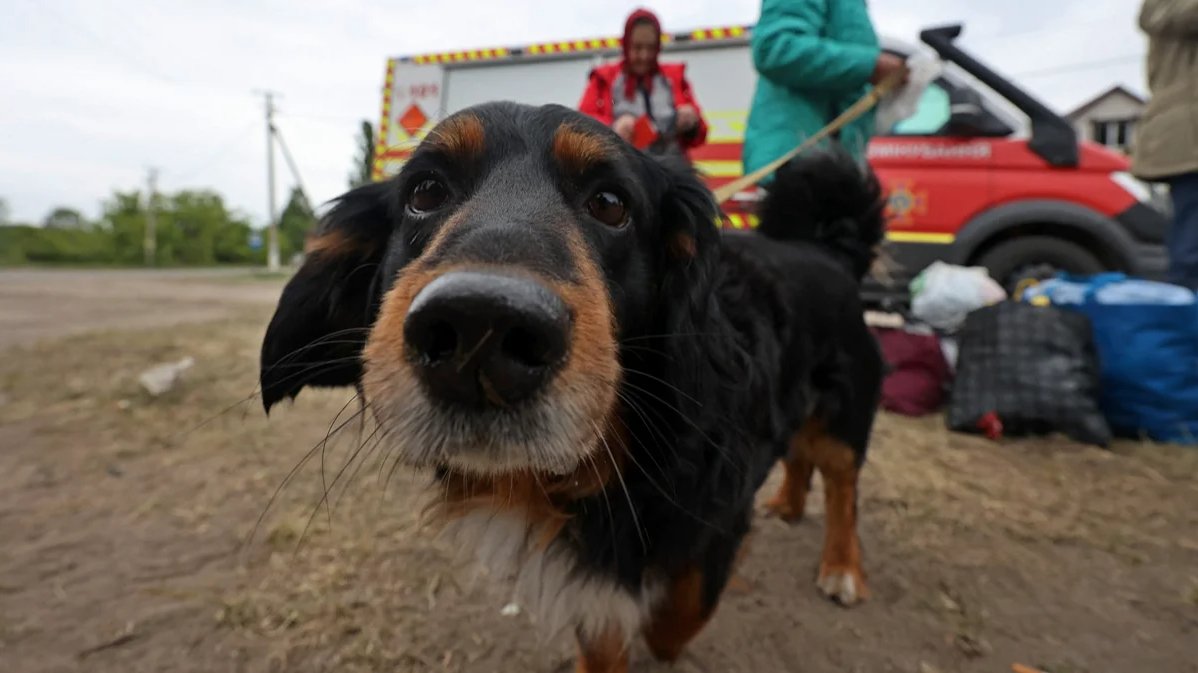A person can decide to stay in or leave the combat zone. An animal can’t. An animal can’t evacuate, can’t ask for help, can’t survive alone and can’t say how scared or hungry it is. Abandoned dogs and cats will cling on to the first person they meet, hoping not to be left alone.
Volunteers are looking for new families for hundreds of animals from Ukraine. These are pets whose owners have been killed in airstrikes, cats and dogs that got lost in the panic of an emergency evacuation, or animals whose owners were left homeless, because all that was left of their house were charred walls or a hole in the ground.
Left behind
Despite daily attacks on the city of Kharkiv in eastern Ukraine, a reduction in funding and the fact that half of the staff have left, the municipal Animal Shelter continues to operate. It currently houses about 100 cats and 500 dogs.
“Nowhere in the city is safe right now. Every night, and some days, there are drones, glide bombs and ballistic cruise missiles,” says Yulia, the shelter’s director.
People made homeless by Russian attacks are placed in dormitories where animals aren’t welcome. Cats and dogs are given away — sometimes temporarily, sometimes forever. Yulia says that close to half of the people forced to give a pet to the shelter come back for them at a later date.
One airstrike on a house one night this year killed an entire family. The only survivor was their Alsatian, which hid through the night in an enclosure on the street. The dog was wounded, and suffered shrapnel cuts. The shelter carried out surgery. And though it looked like no one would come for the animal as its family had been killed, relatives of the victims did eventually come and take the Alsatian.
“It’s hard to judge people. Teams evacuate people from combat zones in vehicles that can fit four or five civilians, at best.”
But there are also many pets that have been left by their owners. One day, a dog was brought into the shelter with its collar embedded in deep wounds in its neck not visible under its fur. The former owners had put it on the dog when it was still a puppy, and when the puppy was abandoned, no one loosened the collar. The only person who took care of the animal was an elderly neighbour who fed it. Despite its serious neck injuries, the dog was eventually nursed back to health.
“It’s hard to judge people. Teams evacuate people from combat zones in vehicles that can fit four or five civilians, at best. … In conditions like those, it’s difficult to take a large dog with you. Those who did often had to hand the animal to a shelter, as it was so hard to find somewhere they could keep the animal,” Yulia says.
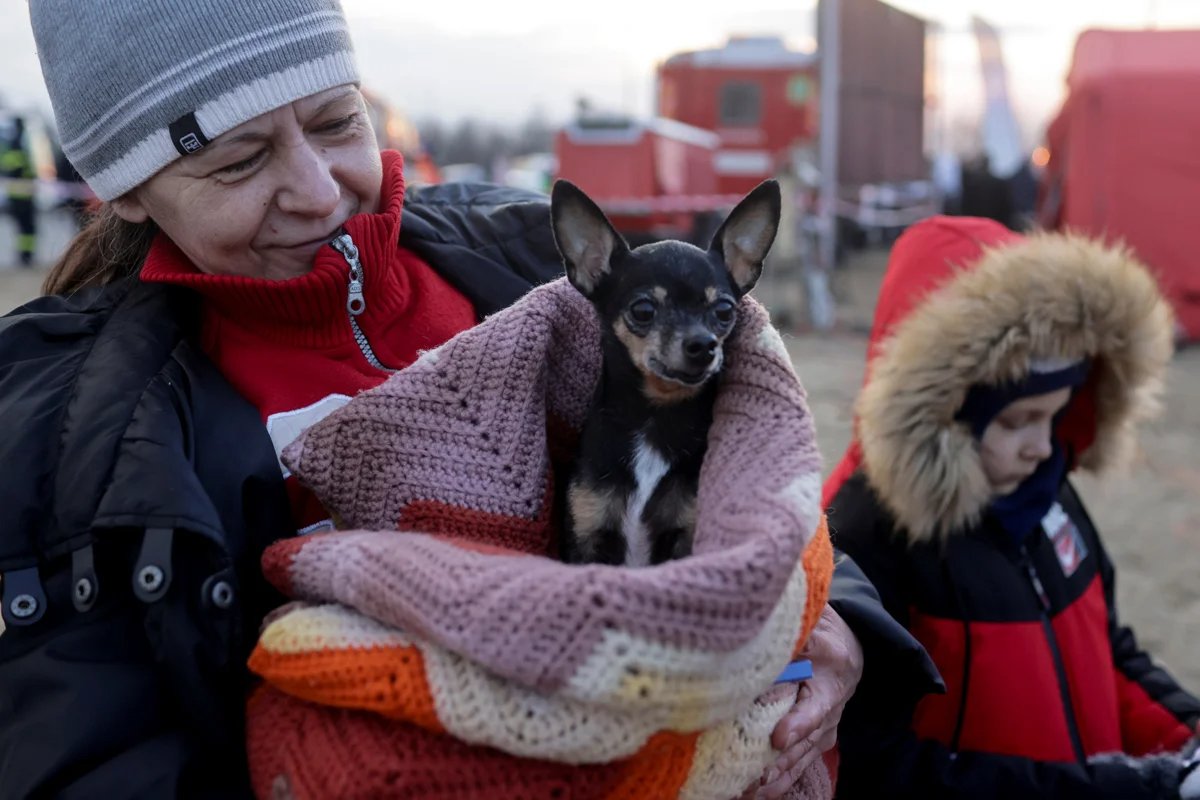
A woman holds a dog as she watches refugees from Ukraine crossing the Ukrainian-Slovak border, Slovakia, 3 March 2022. Photo: Lukasz Glowala / Reuters / Scanpix / LETA
Rescue under fire
Olena from Kharkiv was involved in animal rescue before the war. When the war began, though, she set up the Animal Guardians Foundation, which specialised in evacuating animals from combat zones. The foundation’s shelter currently houses about 130 cats and 15 dogs.
With her coworker Liza, Olena evacuates the animals from combat hotspots in the Kharkiv region to safer settlements, and, if they can’t find new owners, take them to the foundation’s own shelter, where they treat, vaccinate and socialise the animals, while also looking for new homes for them.
Evacuating animals at a time of war always comes with a huge risk. In the village of Slobozhanske, in the Kharkiv region, a whole herd of horses was left with no one to look after them. They were beginning to starve, while many were very sick. Part of the herd was left wandering around the neighbourhood.
“We weren’t even afraid, but the servicemen kept telling us we were crazy.”
Olena asked a rehabilitation centre for horses in the city of Kropyvnytskyi, in central Ukraine, for help evacuating the animals and looking for a safe place for them. They found horseboxes. The foals and ponies in the fenced area were easy to load onto the transport and take away, but most of the herd was scattered across local fields.
Police and local residents warned the rescue workers that the areas the horses were grazing in had not been cleared of mines since the Russian occupation. Still, the centre’s staff went there to evacuate the animals anyway. After a long search, they found and caught the leader of the herd, and most of the horses then followed.
“This happened in May 2024, during a new offensive,” Olena says, recalling seeing the corpses of cows blown up by mines as they searched the area. “We weren’t even afraid, but the servicemen kept telling us we were crazy.”
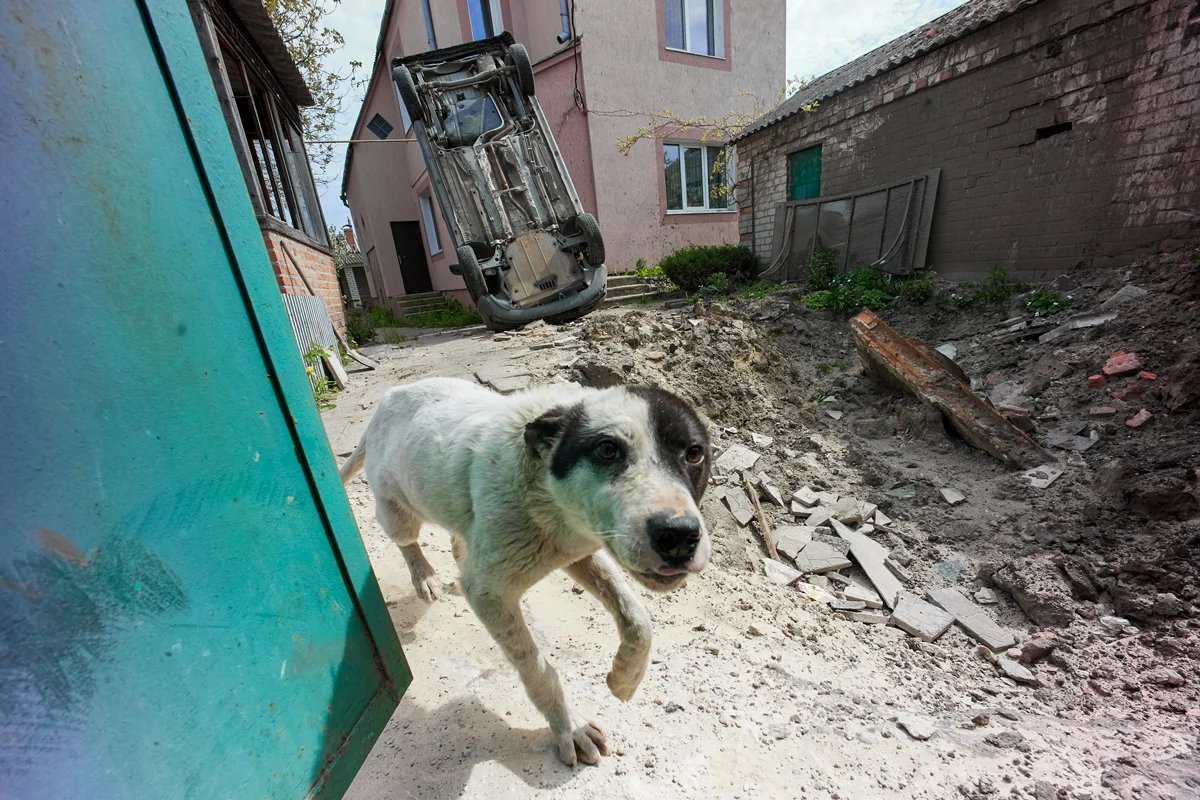
A dog walks past a shell crater on the outskirts of Kharkiv, Ukraine, 11 May 2022. Photo: Sergey Kozlov / EPA
Finding a safe home
While animals are brought to the shelter on an almost daily basis, it remains almost impossible to find new families for them. Many people no longer have a home. And it’s difficult to take on the extra responsibility of a cat or dog in a time of constant shelling.
“We’re bursting at the seams. All the enclosures are overcrowded. There are five to seven dogs per enclosure. They are fed, and they’re warm. But it’s not a home,” Yulia explains.
Ukraine banned putting down animals as a way to deal with strays in 2021. But while nobody adopts dogs from a shelter, it is extremely difficult to accept new ones due to the lack of space.
The heads of the foundation and the shelter therefore try to get the animals to safer areas of Ukraine or to Europe. However, transporting animals to Europe is not as easy as it was at the beginning of the war, when the EU removed many of the requirements for pets being brought in from Ukraine.
Those requirements were reintroduced in the summer of 2023 and included mandatory chipping, a rabies vaccination, a rabies antibody test and a health certificate from a vet.
“We can prepare the documents required for animals to be accepted in Germany, Austria, Hungary and Poland.”
The shelter and foundation staff can take care of all the required paperwork. The future owner has to pay between €350 and €400 for the transportation, chipping, vaccination and medical tests. The transporters the shelter and fund work with can deliver the animal to the address of the future owner in a number of EU countries.
“We tirelessly ask volunteers and organisations to help us find a safe home for animals from Ukraine. Our animals are sterilised, neutered and vaccinated. We can prepare the documents required for animals to be accepted in Germany, Austria, Hungary and Poland,” says Yulia.
The Animal Guardians Foundation and Animal Shelter both rely on donations. They are given monthly support by Let’s Help — a joint project organised by the three media outlets Helpdesk Media, Dozhd and Meduza which collects donations for Ukraine’s civilian population. Let’s Help also accepts applications from people willing to take an animal abroad.
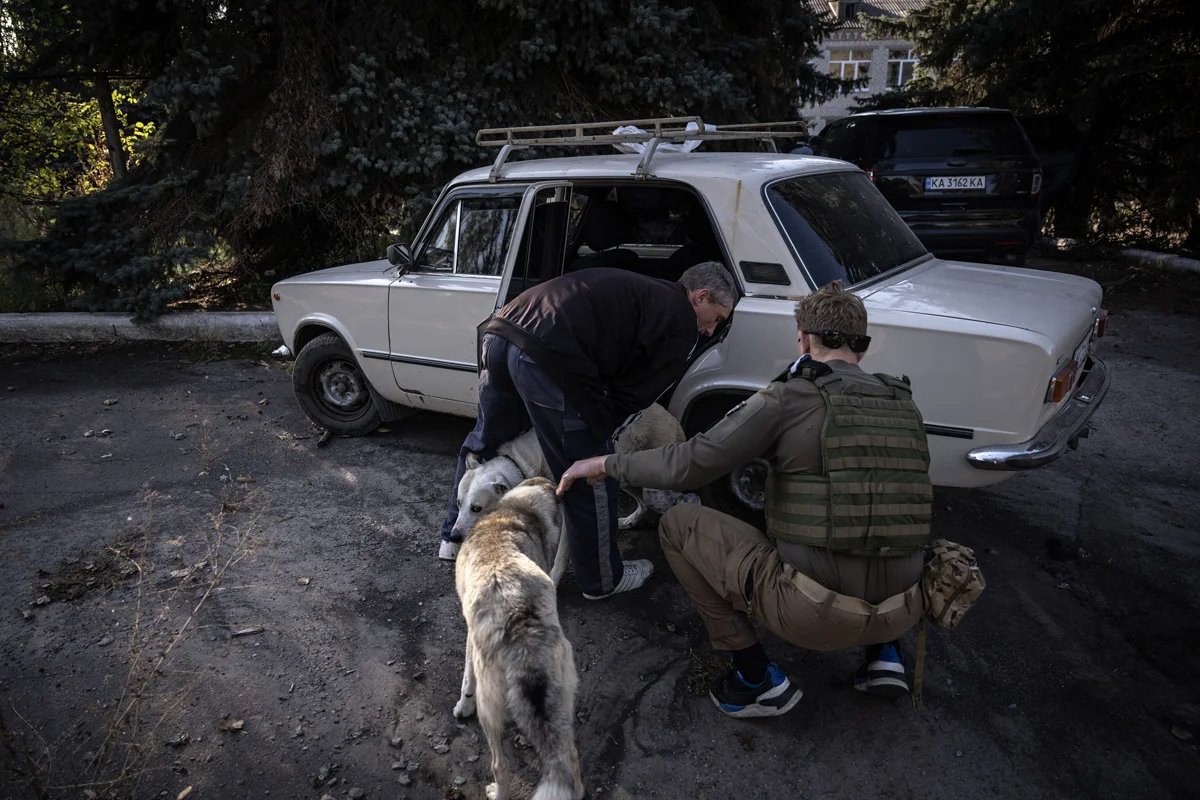
Volunteers evacuating animals from the Kharkiv region, Ukraine, on 20 September 2023. Photo: Ozge Elif Kizil / Anadolu Agency / Abaca Press / ddp images / Vida Press
The lucky ones
In early 2025, a Ukrainian woman living in Germany began to write on social media about animals in the Kharkiv shelter. One of the first dogs to elicit a response was Sherkhan, an Alsatian. A woman from Germany who already had another older Alsatian saw the post and adopted Sherkhan, who is now living a peaceful life in Germany, and is friends with the other dog.

Sherkhan in Germany with a fellow Alsatian. Photo courtesy of Animal Shelter
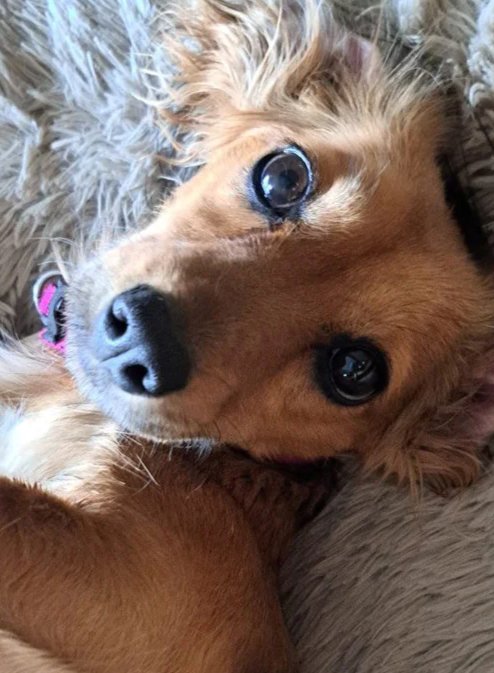
Arisha the dachshund. Photo courtesy of Animal Shelter
Miniature dachshund Arisha also found a new home. A family fleeing shelling near Kharkiv saw the dog on the highway, dragging its hind legs behind it. They picked the dog up and drove it to the shelter. It turned out it had a broken spine and its hind legs were paralysed.
“It was so small,” Yulia recalls. “But it’s a very positive, friendly dog. We kept her in the vets’ offices. One of the vets … made her a wheelchair from plastic water pipes and wheels he bought in a hardware store. And she was charging all around the shelter.”
A woman from Germany who runs a small shelter for dogs with disabilities saw Arisha online and took her in. The dachshund now has free rein on a green lawn in the company of other dogs.
Still looking
The shelter staff and volunteers get attached to the animals. Saying goodbye is hard. But nothing is more important than offering the chance to live with a family.
In March 2023, Olena from Animal Guardians went to the village of Lyptsi, in the Kharkiv region, which had previously been under occupation. She took food and medicine for animals and other aid to local residents. Anatoliy, a local man who took care of the animals in the village, told Olena about a young cat, whom they named Finik, who was in visibly bad shape. His ears were wounded and his fur was matted.
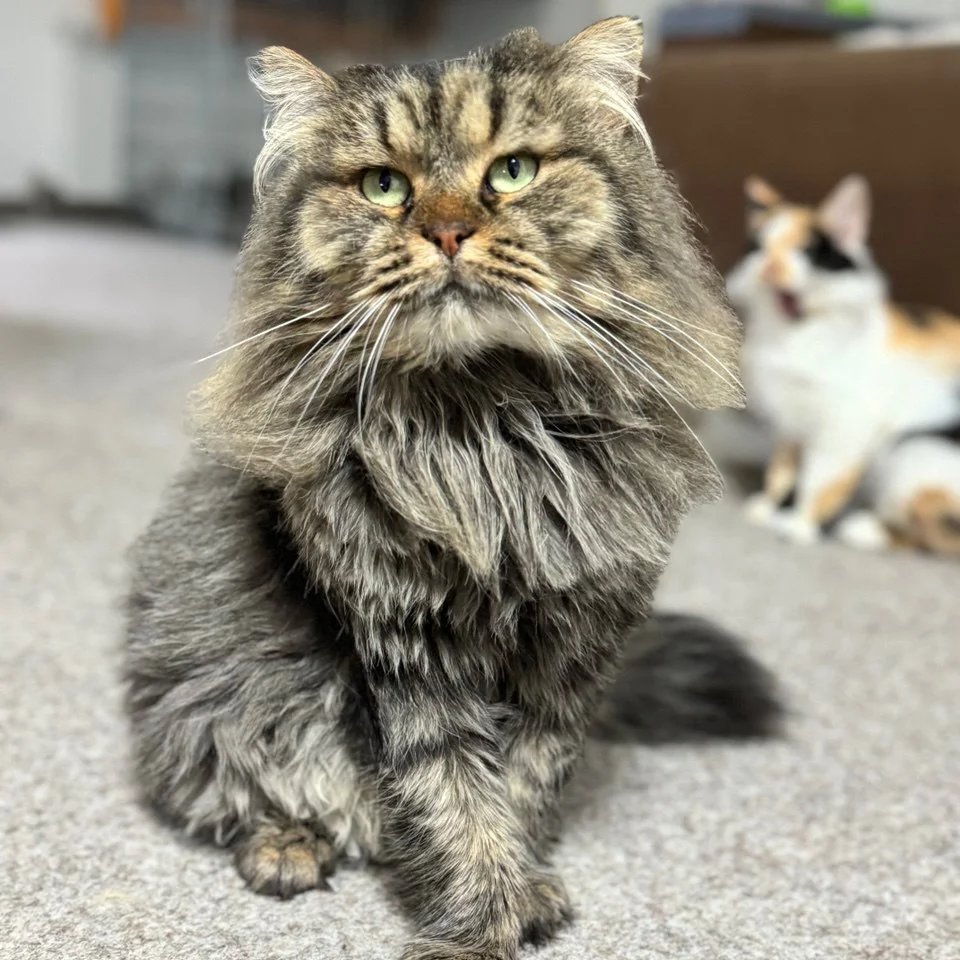
Finik. Photo courtesy of Animal Guardians
Finik was taken to the shelter. “It took four months for him to recover. He was frightened and in pain, but he … took it all in his stride,” Olena says. “Finik may look severe, but he really is very gentle. No one’s noticed him yet, but he’s very much looking forward to a new home.”
The Ukrainian village of Hlyboke is currently occupied by Russian troops. The last time Olena and Liza went there to help the animals was 1 February 2024. There were cats and dogs living in basements in the centre of Hlyboke. The cats and dogs recognised the car and ran out to meet them. The women fed the animals and left more food with the locals.
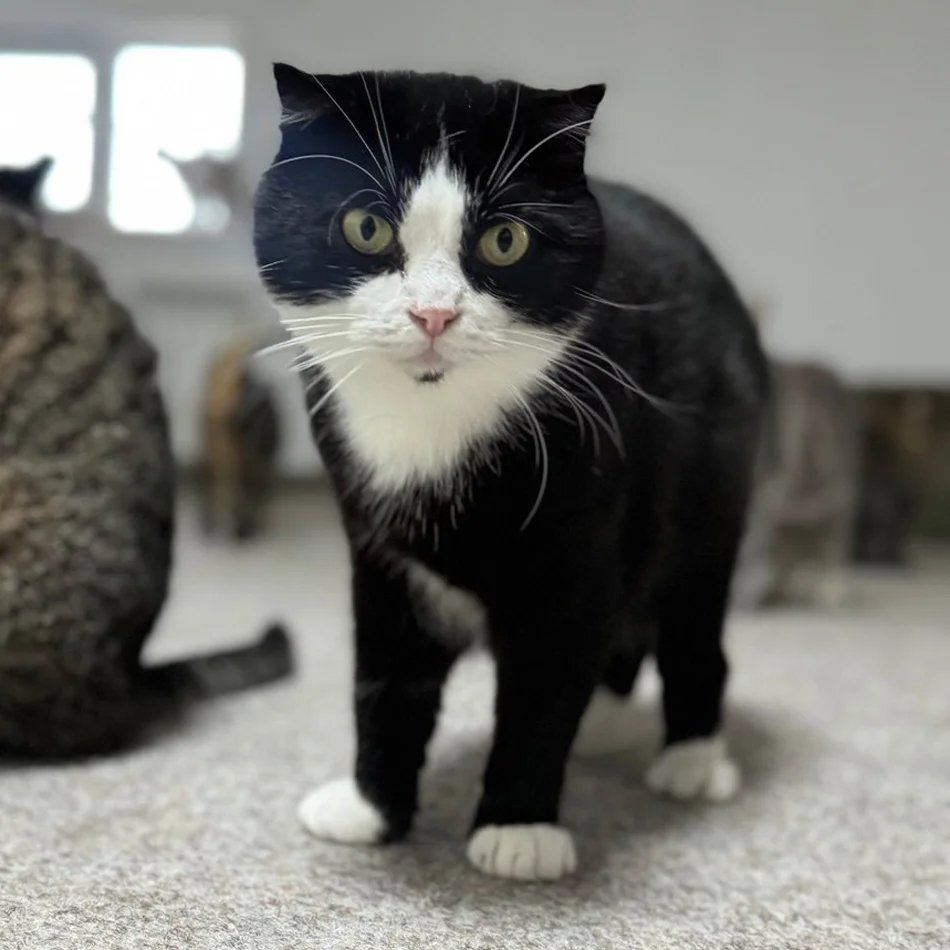
Mira. Photo courtesy of Animal Guardians
Olena noticed that one cat had a deformed tail. The cat looked like a pedigree Scottish Fold and she suspected this was osteochondrodysplasia — a genetic defect which leads to a lack of normal bone growth and deformity. Olena took the cat and named it Mira.
The cat was sterilised and had surgery to remove its dead tail. After the operation, the cat lived at Olena’s home before moving to the shelter.
“I don’t know if it’s because she hasn’t got a tail or due to her colour, but no one has taken Mira, even though she’s such a nice cat. I hope she’ll find the right person and live the rest of her life in love and care,” says Olena.
A new offensive began around Lyptsi in May 2024. The local population was evacuated. Olena and her team dropped all other requests and started evacuating the animals from there. They had trouble navigating as there was no internet. They found one small black dog barking behind a fence. It wasn’t injured, but was severely stressed by the sounds of explosions and shooting. They took the dog, whom they named Chernysh, to the shelter. Even there, it remained very afraid of sounds and people.
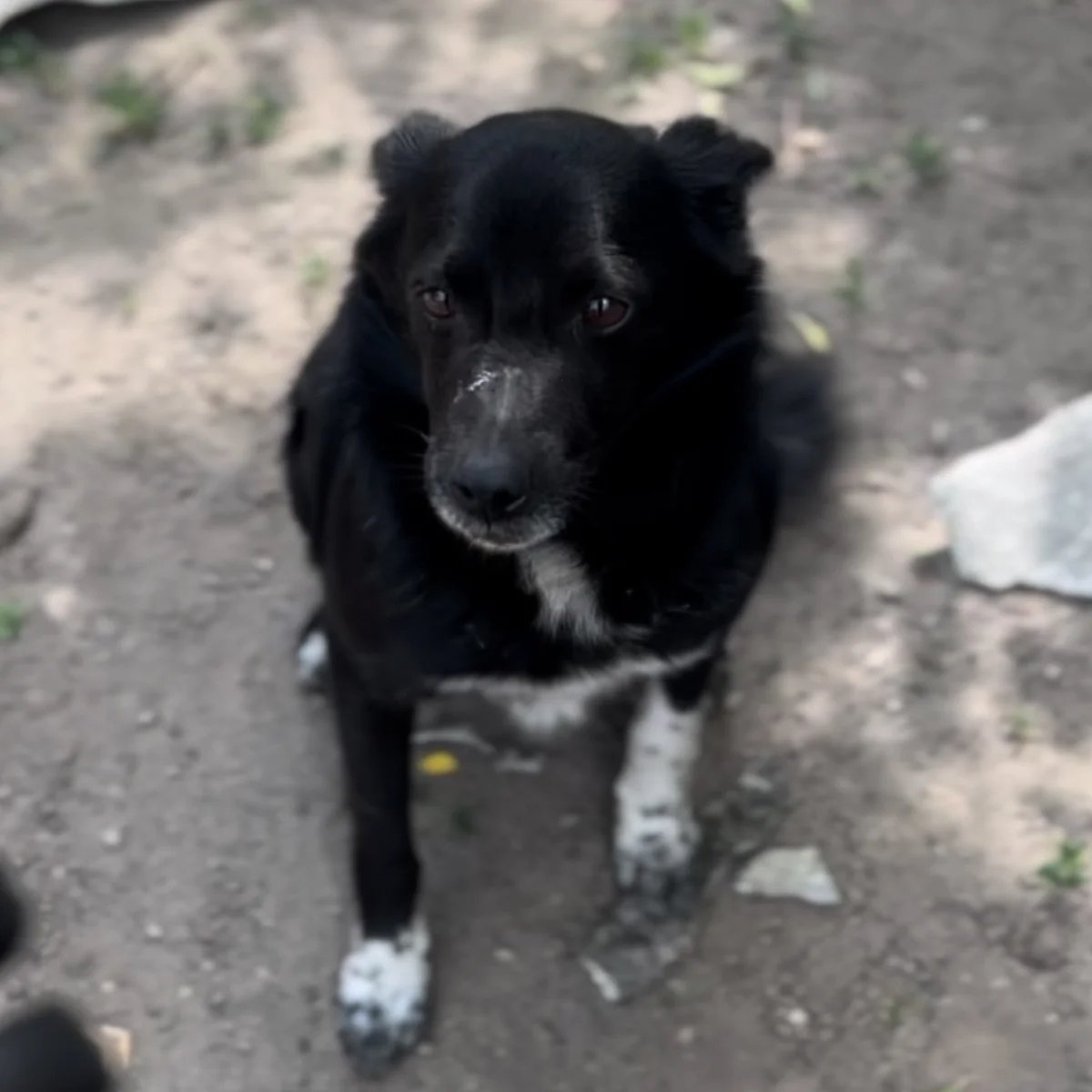
Chernysh. Photo courtesy of Animal Guardians
“It’s very hard to get people to take dogs now, even pedigree ones,” Olena says. And “Chernysh is just a regular little dog that nobody likes or wants. He’s very approachable and affectionate and gets along with other dogs. A family with children would be good for him too. Hopefully he’ll make someone’s heart skip a beat.”
During one of many evacuations of the village of Slobozhanske, this time on 20 May 2024, a dog was heard barking from behind a fence. The gate was closed.
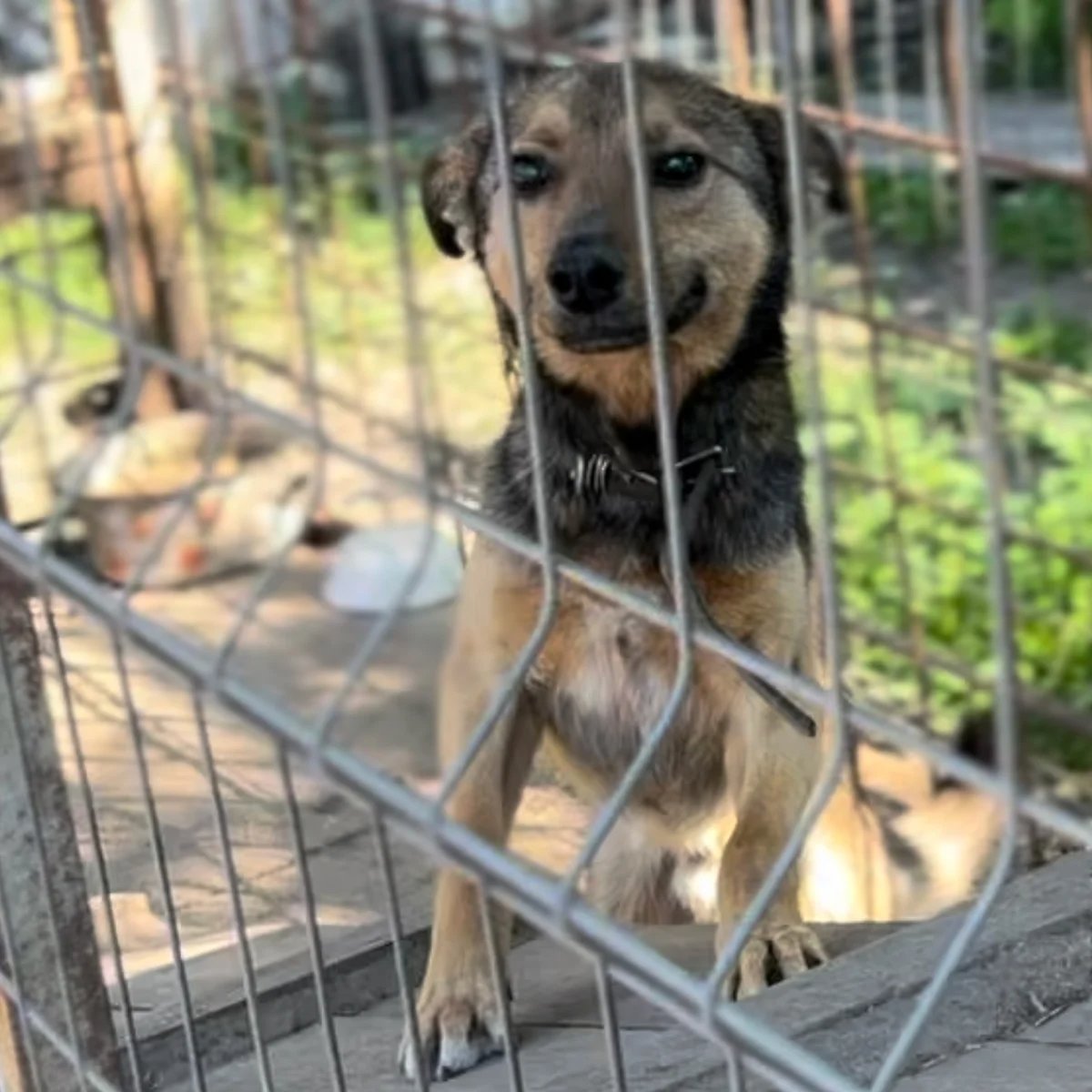
Bucks. Photo courtesy of Animal Guardians
“We climbed over the fence,” says Olena, “and we saw an emaciated dog on a short chain, with no water, next to the partially eaten remains of a kitten. The kitten was likely snuffling around the bowls in search of food, and the dog caught it in an attempt to survive. It survived hunger, fear, and probably human betrayal. It would be good to deliver him to a safe pair of hands.”
They named the dog Bucks. Though he took a long time to adapt, he now gets along with people and small dogs.
*
In May, a rocket landed about 400 meters from the Kharkiv shelter. The roof was torn off, some windows blew out while elsewhere glass cracked and panels from the ceiling landed on the animals. But neither staff nor the animals suffered serious injury. They were lucky. But the war drags on close by every day.
Any readers willing to take care of a cat or dog can write directly to Let’s Help, the Animal Guardians or the Animal Shelter.
Join us in rebuilding Novaya Gazeta Europe
The Russian government has banned independent media. We were forced to leave our country in order to keep doing our job, telling our readers about what is going on Russia, Ukraine and Europe.
We will continue fighting against warfare and dictatorship. We believe that freedom of speech is the most efficient antidote against tyranny. Support us financially to help us fight for peace and freedom.
By clicking the Support button, you agree to the processing of your personal data.
To cancel a regular donation, please write to [email protected]
